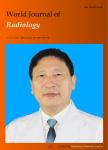Contrast ultrasound in hepatocellular carcinoma at a tertiary liver center: First Indian experience
一是印度的经验:在三级肝脏中心超声造影在肝癌作者机构:Department of Radiodiagnosis Institute of Liver and Biliary Sciences New Delhi 110070 India Department of Radiodiagnosis Institute of Liver and Biliary SciencesNew Delhi 110070 India Department of Interventional Radiology Institute of Liver and Biliary SciencesNew Delhi 110070 India Department of Hepatology Institute of Liver and Biliary SciencesNew Delhi 110070 India
出 版 物:《World Journal of Radiology》 (世界放射学杂志(英文版)(电子版))
年 卷 期:2013年第5卷第6期
页 面:229-240页
学科分类:1002[医学-临床医学] 100214[医学-肿瘤学] 10[医学]
主 题:Hepatocellular carcinoma Contrast ultrasound Tertiary liver care Triple phase contrast-enhanced computed tomography Dynamic contrast enhanced magnetic resonance imaging
摘 要:AIM: To assess the role of contrast enhanced ultrasonography in evaluation of hepatocellular carcinoma (HCC) at the first Indian tertiary liver center. METHODS: Retrospective analysis of contrast enhanced ultrasound (CEUS) examinations over 24 mo for diagnosis, surveillance, characterization and follow up of 50 patients in the context of HCC was performed. The source and indication of referrals, change in referral rate, accuracy and usefulness of CEUS in a tertiary liver center equipped with a 64 slice dual energy computer tomography (CT) and 3 tesla magnetic resonance imaging (MRI) were studied. Sonovue (BR1, Bracco, Italy, a second generation contrast agent) was used for contrast US studies. Contrast enhanced CT/MRI or both were performed in all patients. The findings were taken as a baseline reference and correlation was done with respect to contrast US. Contrast enhanced MRI was performed using hepatocyte specific gadobenate dimeglumine (Gd-BOPTA). Iomeron (400 mg; w/v) was used for dynamic CT examinations. RESULTS: About 20 (40%) of the examinations were referred from clinicians for characterization of a mass from previous imaging. About 15 (30%) were performed for surveillance in chronic liver disease; 5 (10%) examinations were performed for monitoring lesions after radiofrequency ablation (RFA); 3 (6%) were post trans-arterial chemoembolization (TACE) assessments and 3 (6%) were patients with h/o iodinated contrast allergy. About 2(4%) were performed on hemodynamically unstable patients in the intensive care with raised alpha fetoprotein and 2(4%) patients were claustrophobic. The number of patients referred from clinicians steadily increased from 12 in the first 12 mo of the study to 38 in the last 12 mo. CEUS was able to diagnose 88% of positive cases of HCC as per reference standards. In the surveillance group, specificity was 53.3% vs 100% by CT/MRI. Post RFA and TACE specificity of lesion characterization by CEUS was 100% in single/large mass assessment,



